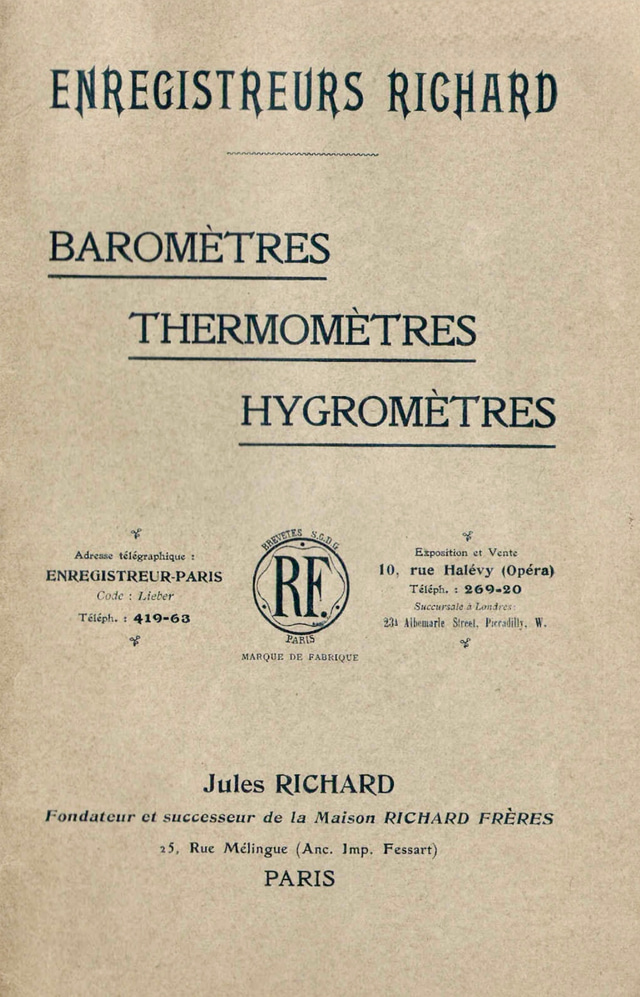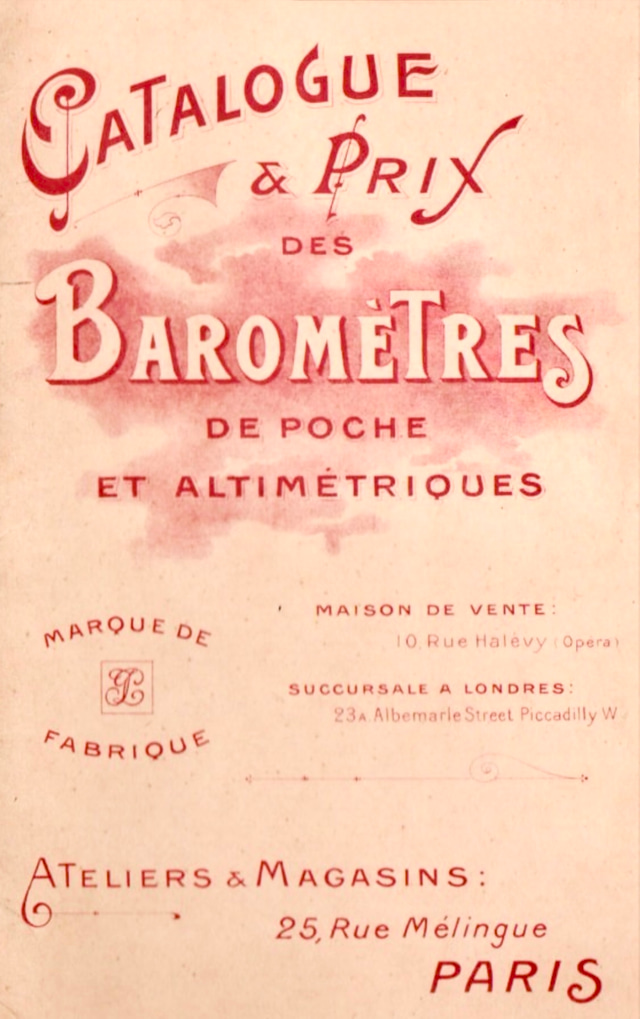

Jules Richard was the son of Félix Richard, who started an instrument-making workshop in Lyon, France, in 1845. Jules was educated at the collège of Beauvais and then spent three years as an apprentice in his father’s workshop. In 1866, he worked for the clockmaker Armand François Collin while attending evening classes at the Conservatoire des Arts et Métiers, where he studied kinematics. He also spent some time working in the “Administration des Télégraphes.” After his father’s death in 1876, Jules inherited the company. From 1882 to 1891, he managed the company under the name Richard Frères in partnership with his brother Félix-Max Richard.
Félix-Max established his own company, Comptoir Général de Photographie, but ended up competing with Jules. A legal battle between the brothers resulted in Félix-Max selling his company to Léon Gaumont in 1895.
After his brother’s departure in 1891, Jules managed the company until his death in 1930. The company specialized in stereo photography, and their Vérascope camera, invented by Jules Richard, became the company’s core product.
In 1923, Jules Richard established his own technical school—an institution that still operates today. This decision wasn’t just philanthropic; it was driven by necessity. The company’s production had grown into a highly specialized domain, requiring not only engineers but also a skilled and reliable workforce capable of handling complex instruments. On one front, the firm was known for its innovations in photography—especially in stereoscopic and relief imaging—with the Vérascope as its flagship product, along with a broad range of devices for projection and image processing. On the other, it developed precision measurement tools, primarily meteorological, serving industries from agriculture to aviation: altimeters, thermometers, barometers, hygrometers, and various recording instruments. Meeting the technological demands of such diverse fields required not just machines, but minds trained to master them.
In 1925, Jules Richard was awarded the title of Commander of the Legion of Honour.
After the death of Jules Richard in 1930, and in the absence of direct heirs, control of the company (according to Richard’s wishes) passed to his closest associate, Léon Henrard. His son, Roger Henrard, would later take over and carry on the family legacy with great success.
Roger Henrard (1900–1975) developed a lifelong passion for aviation and photography from an early age. After World War I, he joined his father at the Jules Richard factory, where he worked on the development of aerial photographic equipment. In 1933, he acquired a Farman aircraft and fitted it with an automatic Planiphote camera developed at the factory, allowing him to carry out aerial photography at speeds of up to 100 km/h.
In the late 1930s, Roger began working closely with the French intelligence services. In 1938–1939, on the eve of World War II, he conducted covert reconnaissance flights over Germany, photographing the Siegfried Line and other strategic targets. During the war, he served as a pilot in the French Air Force and later joined the Allied forces in North Africa. Despite the pressures of war, he remained actively involved in keeping the factory running and preserving its research and production capabilities.
In September 1936, the Ministry of Aviation unveiled a new program aimed at equipping modern aircraft with advanced photographic equipment. The Jules Richard company secured a strong position within this initiative, playing an active role in research and development efforts led by Roger Henrard.
After the war, Roger Henrard became director of Établissements Jules Richard and continued to expand the production of meteorological instruments and stereoscopic cameras. The company faced no sanctions after the Liberation, despite having been under full German control during the occupation. Its operations resumed without interruption, and Roger Henrard—who succeeded his father after his death in 1953—focused his attention primarily on the aerial photography division. He founded his own aerial photography company, which remained active until the 1970s, documenting the architectural transformation of Paris and other French cities.
A man truly “obsessed with the sky,” Roger reflected on his remarkable life in the semi-autobiographical book Un enragé du ciel (“Sky-Obsessed”), published in 1953. Written in the first person, the book blurs the line between memoir and fiction, weaving espionage, aviation, and personal reflection into a compelling narrative. Its sharp, ironic, and romantic tone captures Henrard’s multifaceted identity as inventor, pilot, and dreamer.
The Jules Richard factory was located in the 19th arrondissement of Paris, on Rue Melingue. It produced a wide range of instruments, from barographs and aneroids to sophisticated optical and stereoscopic cameras. Its products were widely used in both scientific and military contexts and remained a benchmark of French precision mechanics well into the 20th century.
After Roger Henrard’s death in 1975, his aerial photography company continued under the leadership of his family. The photographs he produced are now considered a valuable part of France’s technical and cultural heritage and are preserved in national archives and collections.
Jules Richard still exists today in Bezons under the name JRI. Although the company has moved away from photography, it continues to specialize in the production of temperature measurement instruments.